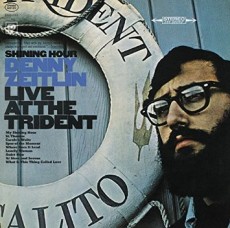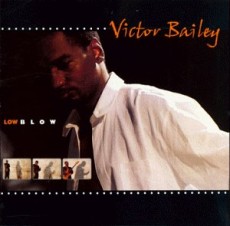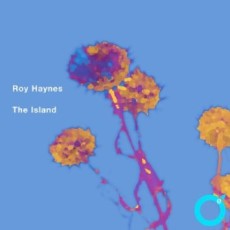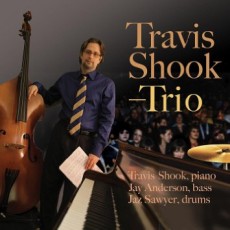
Daily Dose Of Jazz…
Denny Zeitlin was born on April 10, 1938 in Chicago, Illinois and grew up in the suburb of Highland Park. He began improvising on the piano at age two and was composing before elementary school. His father played piano by ear, his mother was his first piano teacher. He began formal study in Western classical music at age six, switching to jazz in the eighth grade. By the time he was in high school, he was playing professionally in and around Chicago.
While in college at the University of Illinois and Urbana-Champaign he was playing with Ira Sullivan, Johnny Griffin, Wes Montgomery, Joe Farrell, Wilbur Ware and Bob Cranshaw. Denny’s mentors included Billy Taylor and George Russell, while Bil Evans supported him by recording his composition “Quiet Now” and giving title to his 1970 album.
Zeitlin began his recording career when signing with Columbia Records in 1963 while studying medicine at John Hopkins University. His debut as a feature pianist was on the Jeremy Steig album Flute Fever along with Ben Riley and Ben Tucker. After moving to San Francisco in 1964 he recorded four albums as a leader for the label. He stood out from the crowd for the unbridled creativity of his work, the richness of his harmonic palette, and the sheer beauty of his piano tone.
Between 1968 and 1978, Denny ventured into electronic keyboards, synthesizers and sound altering devices, integrated them into his music and resulted in the release of Jazzy Spies in 1969 on the first season of Sesame Street. It featured the voice of Grace Slick. He would go on to be awarded Down Beat’s highest award for his Expansion album, score the music for the 1978 remake of Invasion of the Body Snatchers, and by the end of the decade returned focus to acoustic music.
Since 1968, Zeitlin has been on the teaching faculty at the University of California, San Francisco as a clinical professor of psychiatry, has a private practice, and is the founder of Control-Mastery Theory. He does all this while pursuing his passion for jazz, touring internationally and recording more than thirty-five albums to date tha include upwards of 100 original compositions. He is a first-place winner of the Down Beat International Jazz Critics Poll in 1965 and 1974.
More Posts: piano,synthesizer

Daily Dose Of Jazz…
Michael Leonard Brecker was born on March 29, 1949 in Philadelphia, Pennsylvania and raised in the suburb of Cheltenham Township. Exposed to jazz at an early age by his father, an amateur jazz pianist, he grew up as part of the generation of jazz musicians who saw rock music not as the enemy but as a viable musical option. He began studying clarinet then moved to alto saxophone in school, and eventually settling on the tenor as his instrument of choice.
Graduating high school he entered Indiana University for a year before moving to New York City in 1969. He carved out a niche for himself as a dynamic and exciting jazz soloist and first made his mark at age 21 as a member of the jazz-rock band Dreams that included his older brother, trumpeter Randy Brecker and drummer Billy Cobham. Though the band was short-lived it attracted Miles Davis to attend some of their gigs.
Brecker went on to work with Horace Silver and Billy Cobham before teaming with his brother to form the Brecker Brothers. Following the jazz-rock trends of the time, but with more attention to structured arrangements, a heavier backbeat, and a stronger rock influence, the band stayed together from 1975 to 1982, with consistent success and musicality.
Michael was in great demand as a soloist and sideman from mainstream jazz to mainstream rock and played on over 700 albums with James Taylor, Paul Simon, Steely Dan, Lou Reed, Donald Fagen, Dire Straits, Bruce Springsteen, Frank Zappa, Parliament Funkadelic and Joni Mitchell as well as Frank Sinatra, Herbie hancock, Chick Corea, Chet Baker, George Benson, Quincy Jones, Charles Mingus, Jaco Pastorious, McCoy Tyner and Elvin Jones. And that is the short list.
During the early 1980s, he was a member of NBC’s Saturday Night Live Band, co-led the group Steps Ahead, he recorded a solo album ning him back towards more traditional jazz. As a leader throughout the 1990s and 2000s, Michael won multiple Grammy Awards of which one was for Directions In Music: Live At Massey Hall with Herbie Hancock and Roy Hargrove. He consistently sold out his solo and group tours in major cities worldwide.
While performing at the Mount Fuji Jazz Festival in 2004, Brecker experienced a sharp pain in his back. Shortly thereafter in 2005, he was diagnosed with the blood disorder myelodysplastic syndrome or MDS. Unable to find a matching stem cell donor, and an experimental partial match that proved unsuccessful, he played his final public appearance with Herbie Hancock at Carnegie Hall in 2006.
On January 13, 2007, tenor saxophonist Michael Brecker passed away from complications of leukemia in New York City. He was awarded two posthumous Grammy awards for his involvement on his brother Randy’s 2005 album Some Skunk Funk, his final recording, Pilgrimage that same year, and again posthumously awarded two additional Grammy Awards for this album in the categories of Best Jazz Instrumental Solo and Best Jazz Instrumental Album, bringing his Grammy total to 15. He was awarded an Honorary Doctorate from Berklee College of Music and inducted into the Down Beat Jazz Hall of Fame.
More Posts: saxophone

Daily Dose Of Jazz…
Victor Bailey was born on March 27, 1960 in Philadelphia, New Jersey. He attended Boston’s Berklee College of Music after being disqualified from naval service due to asthma.
Bailey has been extremely active on the jazz scene recording seven albums as a leader. However, he has been more prolific as a sideman recording and touring with the likes of jazz legends and musicians such as Sonny Rollins, Miriam Makeba, Larry Coryell, Lenny White, Kenny Garrett, Roy Haynes, Kenny Kirkland, Sadao Watanabe, Hamiet Bluiet, Kevin Eubanks, Bobby Broom and Steps Ahead among numerous others.
Victor has also worked with Mary J. Blige, LL Cool J, Sting, Madonna, Lady Gaga, Tom Brown, Najee, Olu Dara and Patrice Rushen. He has a Victor Bailey Signature acoustic bass released by Fender, as well as the Victor Bailey Jazz Bass (Artist Series), available in 4, 5-string, fretted and fretless versions. Jazz bassist Victor Bailey, best known for his contributions to Weather Report during their final years from 1982 to 1986, continues to perform, record and tour.
More Posts: bass

Daily Dose Of Jazz…
Roy Haynes was born in Boston, Massachusetts on March 13, 1925, and was keenly interested in jazz ever since he can remember. Primarily self-taught, he began to work locally in 1942 with musicians like guitarist Tom Brown, bandleader Sabby Lewis, and Kansas City blues-shout alto saxophonist Pete Brown. In the summer of 1945 he got a call to join bandleader Luis Russell to play for the dancers at New York’s Savoy Ballroom. When not traveling with Russell, the young drummer spent much time on Manhattan’s 52nd Street and uptown in Minton’s, the incubator of bebop.
From 1947 to 1949 Haynes was Lester Young’s drummer, worked with Bud Powell and Miles Davis in ’49, became Charlie Parker’s drummer of choice from 1949 to 1953, toured the world with Sarah Vaughan from 1954 to 1959, did numerous extended gigs with Thelonious Monk in 1959-60. Through the Sixties he performed and recorded with Eric Dolphy, Stan Getz, John Coltrane, has collaborated with Chick Corea since 1968, and with Pat Metheny during the ’90s. He’s been an active bandleader from the late ’50s to the present, featuring on his recordings Phineas Newborn, Booker Ervin, Roland Kirk, George Adams, Hannibal Marvin Peterson, Ralph Moore and Donald Harrison to name a few.
A perpetual top three drummer in the Downbeat Readers Poll Awards, he won the Best Drummer honors in 1996 (and many years since), and in that year received the prestigious French Chevalier des l’Ordres Artes et des Lettres and in 2002 his album “Birds Od A Feather” was nominated for a Grammy. Roy Haynes, percussionist, composer and bandleader nicknamed Snap Crackle, continues to compose, performer, record and tour.
More Posts: drums,percussion

Daily Dose Of Jazz…
Travis Shook was born on March 10, 1969 in Oroville, California and started learning to play the piano at age seven. His family moved to Olympia, Washington when he was ten, spending his adolescent years in the Pacific Northwest. For a period of time he played rock guitar but soon realized jazz improvisation was his passion. At eighteen he enrolled at William Patterson College and studied under Mabern. After graduating he returned to Washington and joined bassist Buddy Catlett’s band where he learned a lot about the history of jazz.
In 1991 he won the Jacksonville Festival’s Great American Piano Competition that led to a contract with Columbia Records/Sony Music. Two years later he moved to New York City and recorded his debut with a quartet that included tony Williams and Bunky Green. Though receiving critical acclaim both in the U.S. and France for this first effort, it was a short-lived relationship when Sony purged a large percentage of the Columbia jazz roster upon acquiring the label in 1993.
After spending some time in obscurity after being attacked by New York Times critic Peter Watrous who criticized one of his performances, he entered a dark period in his life: alcoholism. A year later he got picked up by Betty Carter and went on tour through Europe, but he sunk deeper and added drugs to his plate of demons. Unemployable, he dropped out of the public eye for a number of years. Travis met, moved in with and ultimately married jazz singer Veronica Nunn who helped him overcome his demons and since 1998 he has been sober.
In 1999 Shook and his wife started their own record label, Dead Horse Records, which has released four recordings to date. Over the years he has performed with Reggie Workman, Eddie Harris, Joe Lovano, toots Thielemans, Rufus Reid, Chuck Israels, Ernestine Anderson, Branford Marsalis, Benny Golson and Clifford Jordan as well as Sonny Simmons, Michael Franks, Gino Vanelli, Bob Hope and Chris Botti among others.
His influences were Ahmad Jamal, McCoy Tyner, Duke Ellington, Harold Mabern, Herbie Hancock and Bill Evans but also John Coltrane, Miles Davis and Elvin Jones.Pianist Travis Shook continues to perform and record while building the catalogue of Dead Horse Records.
More Posts: piano


